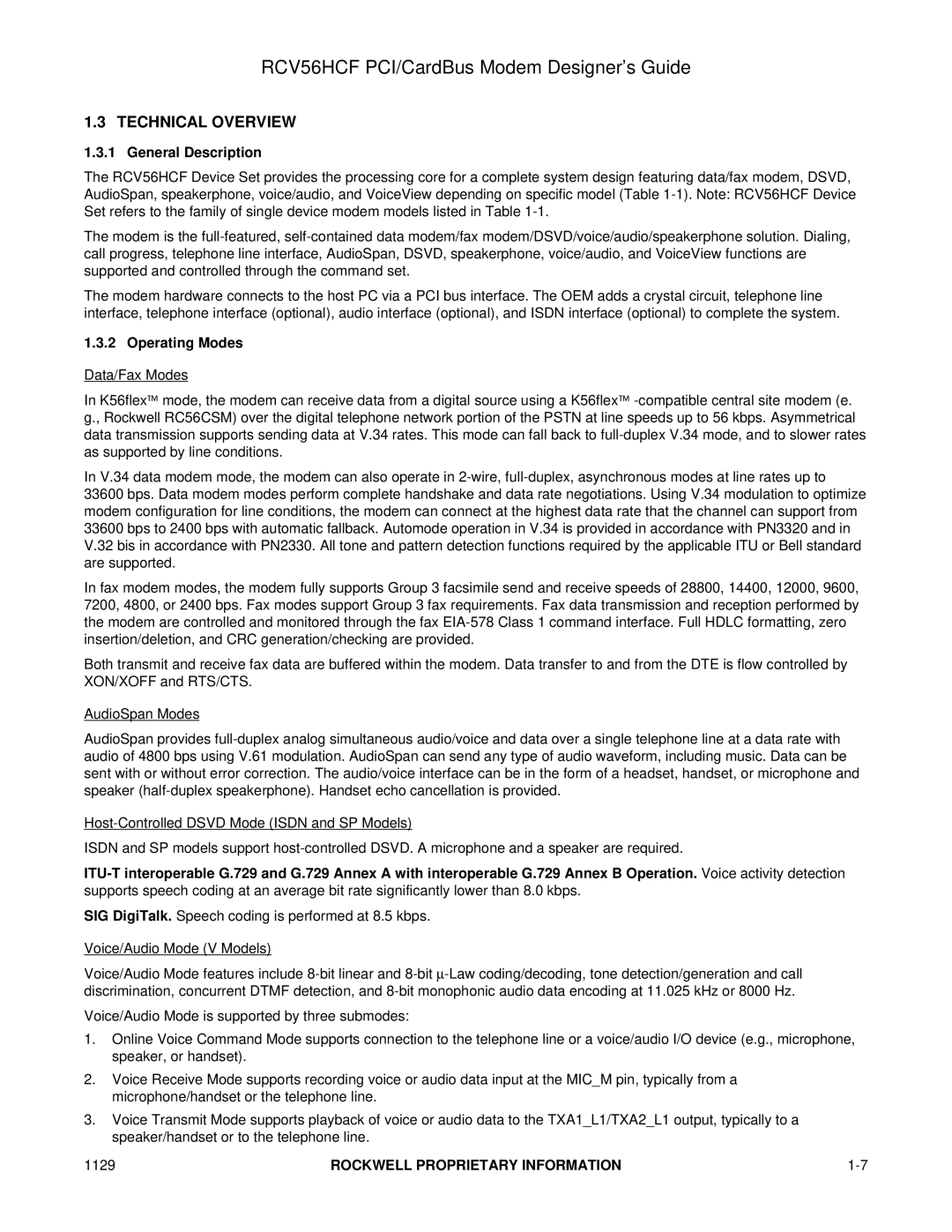RCV56HCF PCI/CardBus Modem Designer’s Guide
1.3 TECHNICAL OVERVIEW
1.3.1 General Description
The RCV56HCF Device Set provides the processing core for a complete system design featuring data/fax modem, DSVD, AudioSpan, speakerphone, voice/audio, and VoiceView depending on specific model (Table
The modem is the
The modem hardware connects to the host PC via a PCI bus interface. The OEM adds a crystal circuit, telephone line interface, telephone interface (optional), audio interface (optional), and ISDN interface (optional) to complete the system.
1.3.2 Operating Modes
Data/Fax Modes
In K56flexä mode, the modem can receive data from a digital source using a K56flexä
In V.34 data modem mode, the modem can also operate in
33600 bps. Data modem modes perform complete handshake and data rate negotiations. Using V.34 modulation to optimize modem configuration for line conditions, the modem can connect at the highest data rate that the channel can support from 33600 bps to 2400 bps with automatic fallback. Automode operation in V.34 is provided in accordance with PN3320 and in V.32 bis in accordance with PN2330. All tone and pattern detection functions required by the applicable ITU or Bell standard are supported.
In fax modem modes, the modem fully supports Group 3 facsimile send and receive speeds of 28800, 14400, 12000, 9600, 7200, 4800, or 2400 bps. Fax modes support Group 3 fax requirements. Fax data transmission and reception performed by the modem are controlled and monitored through the fax
Both transmit and receive fax data are buffered within the modem. Data transfer to and from the DTE is flow controlled by XON/XOFF and RTS/CTS.
AudioSpan Modes
AudioSpan provides
ISDN and SP models support
supports speech coding at an average bit rate significantly lower than 8.0 kbps.
SIG DigiTalk. Speech coding is performed at 8.5 kbps.
Voice/Audio Mode (V Models)
Voice/Audio Mode features include
Voice/Audio Mode is supported by three submodes:
1.Online Voice Command Mode supports connection to the telephone line or a voice/audio I/O device (e.g., microphone, speaker, or handset).
2.Voice Receive Mode supports recording voice or audio data input at the MIC_M pin, typically from a microphone/handset or the telephone line.
3.Voice Transmit Mode supports playback of voice or audio data to the TXA1_L1/TXA2_L1 output, typically to a speaker/handset or to the telephone line.
1129 | ROCKWELL PROPRIETARY INFORMATION |
